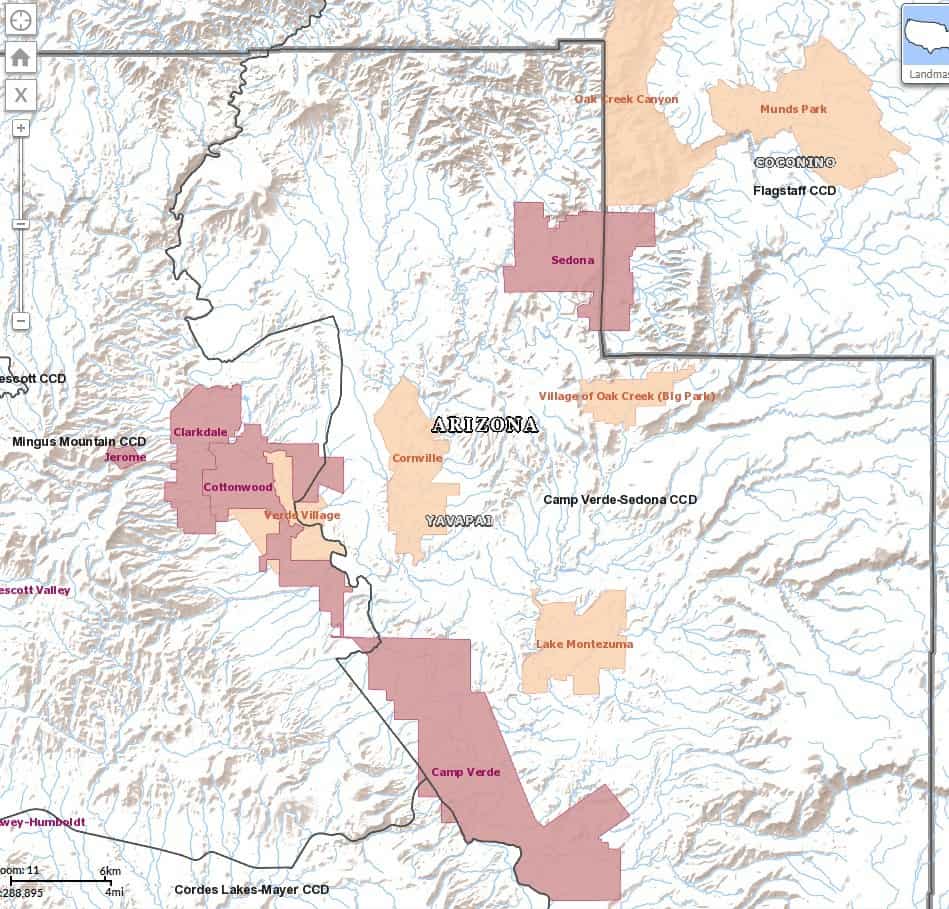With the release of the 2020 U.S. Census numbers, the city of Sedona has seen a significant drop in population of 347 while every other incorporated municipality in the Verde Valley has grown, some significantly, such as Camp Verde, which added 1,274 residents.
Likewise, the unincorporated communities between our cities have also grown, with the exception of the Village of Oak Creek, which saw a slight drop of 19.
In our newsroom, we had a running tally of our individual estimations of Sedona’s eventual number, with most anticipating a slight increase. The highest guess was one of our optimistic advertising representatives estimating 12,500 and the lowest was our bookkeeper at 8,947½, always keeping us grounded with our numbers.
Several of our staffers guessed right around the 2010 number 10,031 or the 2019 Census official estimation of 10,331. I optimistically guessed 11,000, accounting for a 3% annual increase to the 2019 estimate as well as the fact that the 2010 Census was taken when Sedona was still suffering a population drop due to the Great Recession of 2008-2009, artificially dropping our 2010 number, because the economy significantly affected the working class and families.
Incidentally, Sedona residents who have lived here since before the recession remember the vibrant live music scene when bars and restaurants throughout the city had live music nearly every night, with most bands playing original songs rather than covers. The bar scene was a wild place with at least four, sometimes six, packed along State Route 89A. Once the recession hit and the musicians’ day jobs dried up, many left for greener pastures, in both senses of the word. A handful returned but most never did and the music scene has never really recovered.
That said, a number of us correctly estimated that our population would see a drop. Ultimately, two of our staffers were only off of the final tally by a little more than 100 residents each.
Arizona saw an overall increase from 6,392,288 to 7,151,502, although below the 2019 estimate of 7,278,717. Yavapai County grew 11.9% from 211,033 to 236,209 while Coconino County grew 7.9% from 134,426 to 145,101.
The Verde Valley as a whole saw a net increase of about 3,000 people, but it is significant that those new residents are not moving into Sedona, but into other communities, balancing out our net population loss.
The U.S. Census doesn’t track where people move to and from, it is merely a decennial gross head count. We’ll have to wait another 75 years for demographers to be able to compare names to see where the specific movement was over the last 10 years. So until the year 2095, we will merely have to guess or use metrics by other demographic agencies and organizations.
Yavapai County expects to see an annual growth rate of 1.4% to 1.6%, but they are not moving into Sedona. We can say with some confidence that the increase in home prices has pushed out many residents. Out-of-towners are buying homes and converting them into absentee-owner short-term rentals, evicting some residents or simply not renewing leases for others. Retirees with a lifetime of savings or couples without children and their expenses can afford higher rents than residents with high monthly expenses — i.e., “kids” with their toys, food, clothes and needs.
Over the last decade, families with children moved to other parts of the Verde Valley or the state for better opportunities, larger schools and better education options. The Sedona-Oak Creek School District has seen a drop year after year. In 2007, SOCSD had 1,435 students. In 2021, only an estimated 732. Roughly a quarter [22.3%] of the U.S. population is age 18 or younger. In Coconino, it’s 20%, and Yavapai 15.9%. Camp Verde is close to the national average at 24% while Cottonwood is close to the county average at 16.3%. Sedona, meanwhile, is merely 7.5%. Sedona has half the number of children, about 680, as the communities surrounding us.
Sedona was already smaller than Camp Verde and Cottonwood in the last census, but just barely by a few hundred. Now Sedona is three-quarters their sizes.
Sedona voters tend to have more college degrees, be more politically invested and donate more money to local, state and national campaigns, but when it comes to providing actual votes for candidates in elections, both Cottonwood and Camp Verde have more registered voters and more votes even with lower turnout.
Without affordable housing, without families and younger residents, Sedona will lose political clout with state and regional politicians as we drop in population in the years to come.
Christopher Fox Graham
Managing Editor
